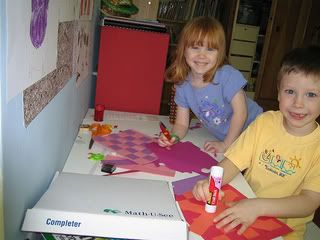By
Deanna MascleWhen we consider all the elements that go into becoming a skilled reader it seems a monumental task and yet some how young children learn the many different decoding skills necessary to them and most become proficient readers within the first few years of school.

However not all young children learn to read with ease and even those who will eventually succeed face struggles on the road to success. One easy way that parents can help smooth the path to reading success for their children is through the use of word families.
Word families, sometimes called phonograms or chunks, can really help emergent readers begin to understand our complicated, and often inconsistent, language by providing some predictable patterns within words. As you and I learned to read, we picked up these patterns effortlessly, and they still help us when we try to decode new words. When we direct our students' attention to these same patterns, they too will be able to untangle the seemingly unrelated sounds of English.
When learning to read, patterns are important. Children recognize word patterns and this makes it easier when sounding out words.
For example, let us consider the "all" word family. First, show "all" to the child and have them repeat the sound. Then show the word "ball" and demonstrate how you can "read" the word by first making the "b" sound and then the "all". Repeat it slowly and then more quickly. Now continue with some other members of the "all" family such as call, fall, hall, mall, stall, tall, wall.
Can you see how much easier this method of using "chunks" of letters is compared to sounding out one letter at a time? We break words into chunks naturally as skilled readers and teaching children this skill can help them learn to read.
What is even better is that once children learn the 37 most common word families in English they will be able to decode 500 words. That puts emergent readers well on their way to mastering the entire decoding process. The most common word families include: ack, ain, ake, ale, all, ame, an, ank, ap, ash, at, ate, aw ay, eat, ell, est, ice, ick, ide, ight, ill, in, ine, ing, ink, ip, it, ock, oke, op, ore, ot, uck ,ug, ump, unk.
Word families are indeed an efficient way to get children reading. Once children learn these one-syllable phonograms then they will more easily be able to decode longer words, too.
Exposing your child to word families, teaching the use of these language patterns, and reinforcing the knowledge with rhyming games and activities will help your child learn to read.
Visit Deanna Mascle's blog
Reading Strategies at
YouCanTeachYourChildToRead.com to learn more about
Word Families
















